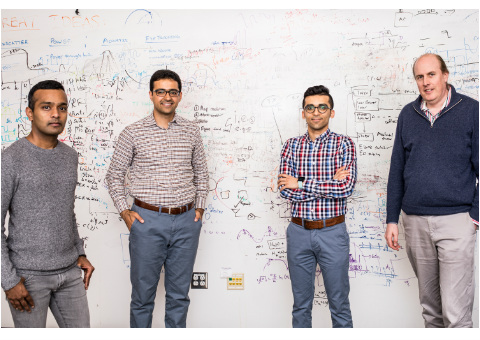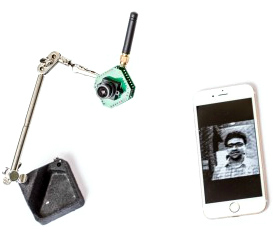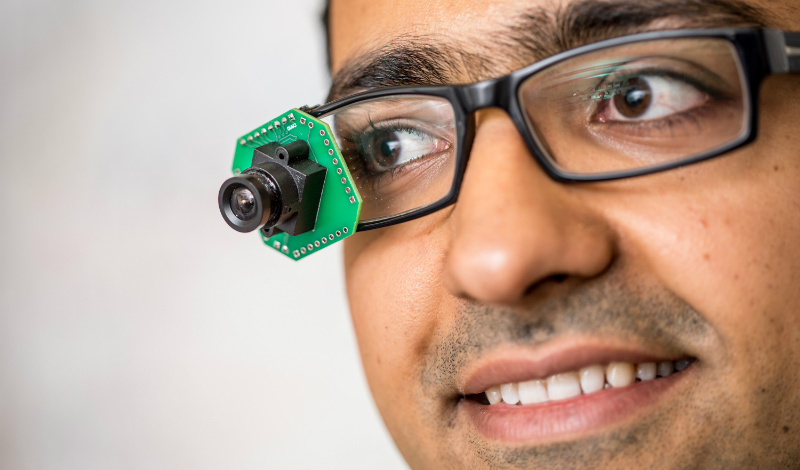Ultra low power HD video streaming is now a reality, thanks to university researchers. This breakthrough discovery promises a future of billions of tiny, battery-free video cameras used in everything from science and engineering, to concerts and sports.
Story by Sarah McQuate
With today’s streaming cameras, a camera first processes and compresses video before it’s transmitted via Wi-Fi. These processing and communication components eat up a lot of power, especially with high definition (HD) video.
Now, engineers at the University of Washington (UW) have developed a new, extremely low power HD video streaming method that doesn’t need to be plugged in. Their prototype skips the power-hungry parts and has something else, like a smartphone, process the video instead.
It does this using a technique called backscatter, through which a device can share information by reflecting signals that have been transmitted to it. The pixels in the camera are directly connected to the antenna, which sends intensity values via backscatter to a nearby smartphone. The phone, which doesn’t have the same size and weight restrictions as a small streaming camera, can process the video instead.
“Imagine you go to a football game five years from now. There could be tiny HD cameras stuck on players’ helmets and everywhere across the stadium.”
(More after the video jump)
“The assumption people have made so far is that backscatter can be used only for low-data rate sensors such as temperature sensors,” says co-author Shyam Gollakota, an associate professor with UW’s School of Computer Science & Engineering. “This work shows that backscatter can indeed support even full HD video.”
For the video transmission, the system translates the pixel information from each frame into a series of pulses where the width of each pulse represents a pixel value. The time duration of the pulse is proportional to the brightness of the pixel.
“It’s sort of similar to how the cells in the brain communicate with each other,” says co-author Joshua Smith, a professor with UW’s Department of Electrical Engineering. “Neurons are either signaling or they’re not, so the information is encoded in the timing of their action potentials.”

The team (pictured above left to right: Shyam Gollakota, Saman Naderiparizi, Mehrdad Hessar, Joshua Smith) tested their idea with a prototype that converted HD YouTube videos into raw pixels. Then they fed the pixels into their backscatter system, which can stream 720p HD videos at 10 frames per second to up to 14 feet away.
“That’s like a camera recording a scene and sending the video to a device in the next room,” adds co-author and computer science and engineering doctoral student Mehrdad Hessar.
The group’s system uses 1,000 to 10,000 times less power than current streaming technology, but it still has a small battery to support continuous operation. The next step is to make wireless video cameras that are completely battery-free, says Smith.
 The team also created a low-resolution, low power HD video security camera prototype (pictured), which can stream at 13 frames per second. This rate is perfect for most potential applications.
The team also created a low-resolution, low power HD video security camera prototype (pictured), which can stream at 13 frames per second. This rate is perfect for most potential applications.
“There are many applications,” says co-author and recent UW electrical engineering alum Saman Naderiparizi. “Right now home security cameras have to be plugged in all the time. But with our technology, we can effectively cut the cord for wireless streaming cameras.”
The group also envisions a world where these cameras are smart enough to only turn on when they are needed for their specific purpose, which could save even more energy.
“Just imagine you go to a football game five years from now,” says Smith. “There could be tiny HD cameras everywhere recording the action: stuck on players’ helmets, everywhere across the stadium. And you don’t have to ever worry about changing their batteries.”
The UW team presented their findings this month at the Advanced Computing Systems Association’s Symposium on Networked Systems Design and Implementation. The research was funded by the National Science Foundation, the Alfred P. Sloan Foundation and Google Faculty Research Awards.
The team’s low power HD video technology has been licensed to Jeeva Wireless, a Seattle-based startup founded by a team of UW researchers, including Gollakota, Smith and Vamsi Talla, a recent UW alum and co-author of the paper. For more information, you can contact Jeeva Wireless (jeevawireless.com) or the research team at batteryfreevideo [at] cs.washington.edu.
Photos in this story are by Dennis Wise, UW.
This story’s trending topics: low power HD video streaming, battery-free video cameras, mobile technology research, University of Washington





